| Frameless version of this page |
The comet 17P/Holmes was named after the discoverer, the English amateur astronomer Edwin Holmes. The amateur astronomer discovered this comet on November 06 1892. At that time the discovery of this comet was only possible because of an extraordinary rising brightness. As in the year 2007 the comet was also visible to the naked eye in the first half of November 1892. Because this comet on his 7 year orbit comes in perihelion to the sun only as close as planet Mars or 300 million kilometers he would not have been discovered in 1892 or in the following years without that extraordinary rising brightness.
After the discovery in the year 1892 the comet was only a very faint object in the following years. In the years from 1906 to 1964 the comet was lost. Since 1964 the position is known permanently until now. But visual observation always was only possible with telescopes of around one meter diameter or more.
On May 04 2007 the comet reached the perihelion, the closest point to the sun. Since this date the comet is on the way again to the farest point of his path around the sun in a distance of around 775 million kilometers. In the early morning of October 24 2007 the observer Juan Antonio Henrquez Santana from Tenerife announced that this comet is much brigther as expected. In the following hours the fast rising brightness was confirmed by a large number of observers around the globe and observations were continued.
Until the night of October 25 2007 the comet had raised the brightness from +16.9mag by a factor of about 500.000 and was an easy naked eye object with +2.5mag now. But in northern Austria in the region of Woodquarter due to bad weather a first observation was not possible before October 27 2007. On this evening the comet was visible first and for few minutes sometimes through thin clouds.
| A comet with this sensational behaviour is assumed to be a once in a human live time event. |
| Overview starmap with apparent path of comet 17P/Holmes |
| Detail starmap with exact position of comet 17P/Holmes |
| Ephemerides table of comet 17P/Holmes (10/2007 - 03/2008) |
| My first image from 17P/Holmes on October 27 2007 made through thin clouds Canon EOS 20D on tripod without tracking, 300mm, f5.6, 32 x 2sec. ISO 1600 |
The Earthmoon and comet 17P/Holmes in direct size comparison on October 31 2007
This two combined images below from moon and comet 17P/Holmes were exposured on October 31 2007 at about 22h34 UTC with DSLR camera Canon EOS 20D on Newton 254/1200mm. Of course, two images were superimposed here because the moon was 55 degrees away from the comet on sky at this time. But both images were taken through the Newton telescope with a focal length of 1200mm and are showing the right sizes in comparison.
Moon and comet 17P/Holmes on October 31 2007 at 22h34 UTC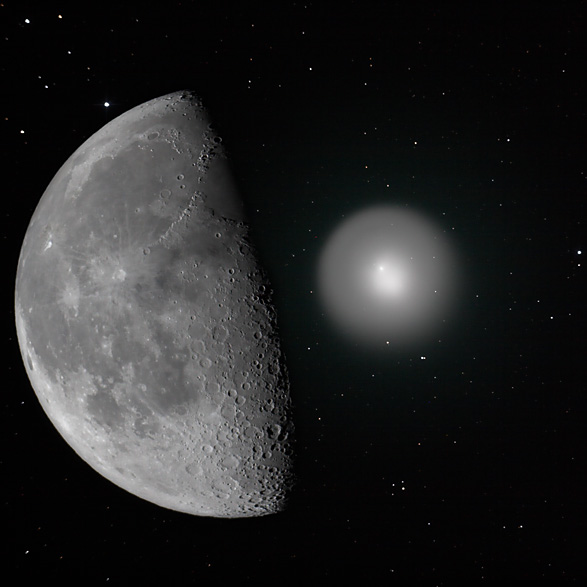 |
Click for detail image in half sensor resolution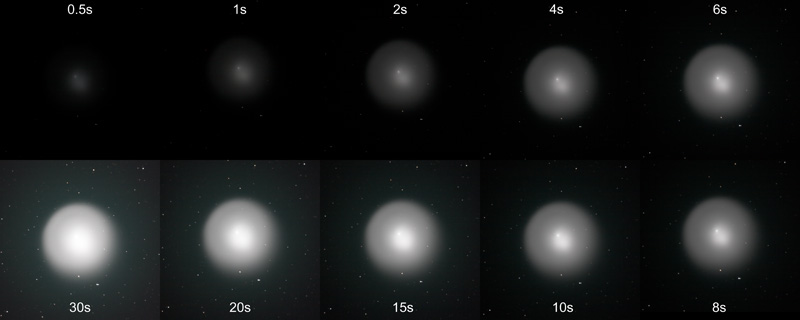 |
Comet 17P/Holmes on October 31 2007 from 22h16 to 22h57 UTC, Canon DSLR EOS 20D, ISO 800 every single images consist of 4 superimposed exposures, Newton 1200/254mm on EQ6 with EQMOD |
Spectrum from comet 17P/Holmes and stars on November 01 2007 at 00h43 UTC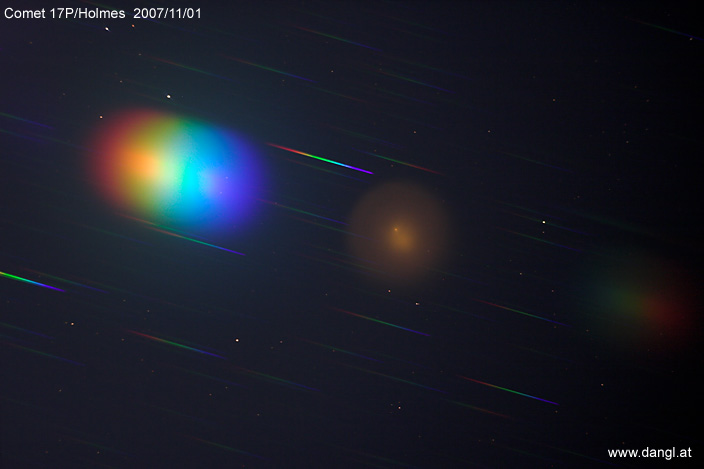 Canon EOS 20D + holographic Blaze-grid with 207 lines/mm on acetate foil with a thickness of 1/100mm |
More images with video camera WAT-120N on Newton 1200/254mm
Comet 17P/Holmes on November 01 2007 at 20h48 UTC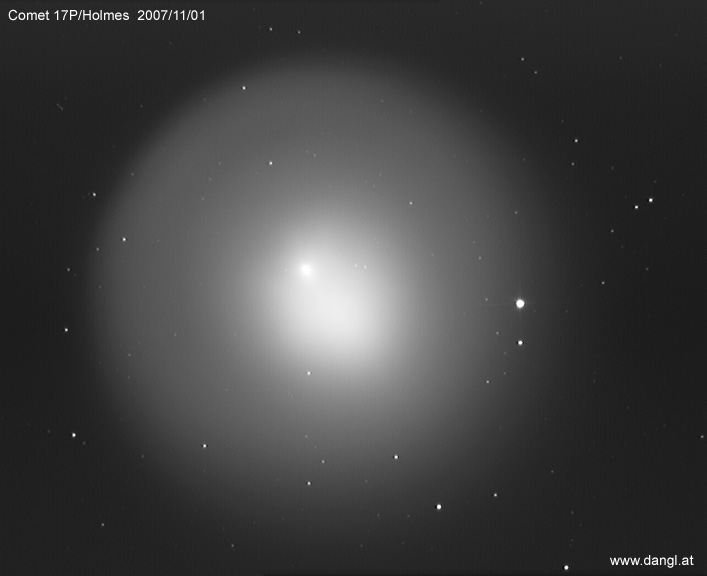 Video camera WAT-120N, exposure time 70 x 2.56 = 179.2 seconds, 1.43 arcsec/pixel Visible field of view 1.186.000km x 966.000km in a distance of 243 Mio km |
The increasing size of comet 17P/Holmes within five days with simultaneous brightness decreasing of area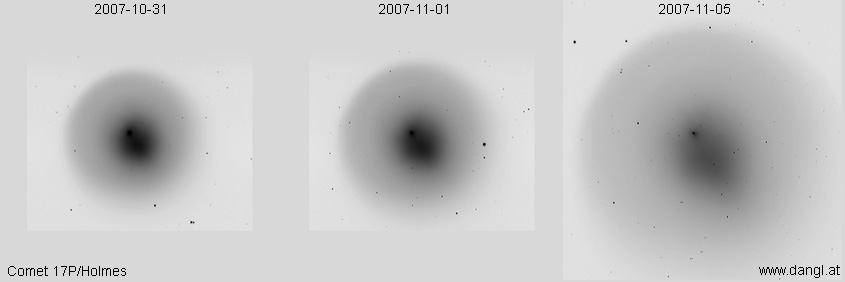 Expansion about 600 meters per second or 52.000 kilometers per day |
Animation of size increasing of comet 17P/Holmes within five days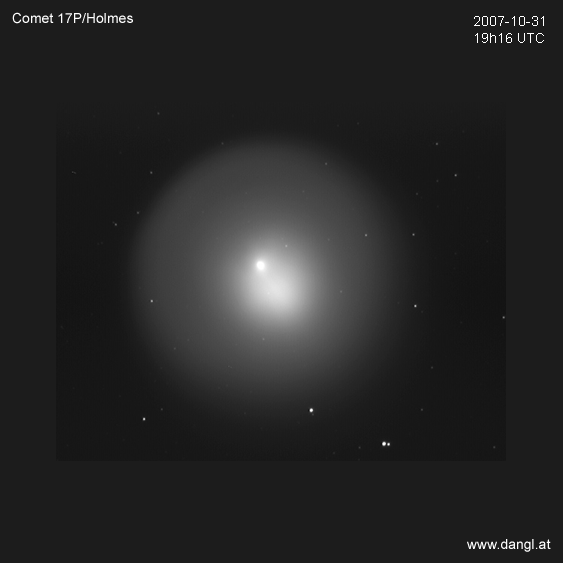 Distance 243 million kilometers |
The combination of four WATEC images was needed here because the size of comet 17P/Holmes on November 05 2007 has increased to about 55 percent of a full moon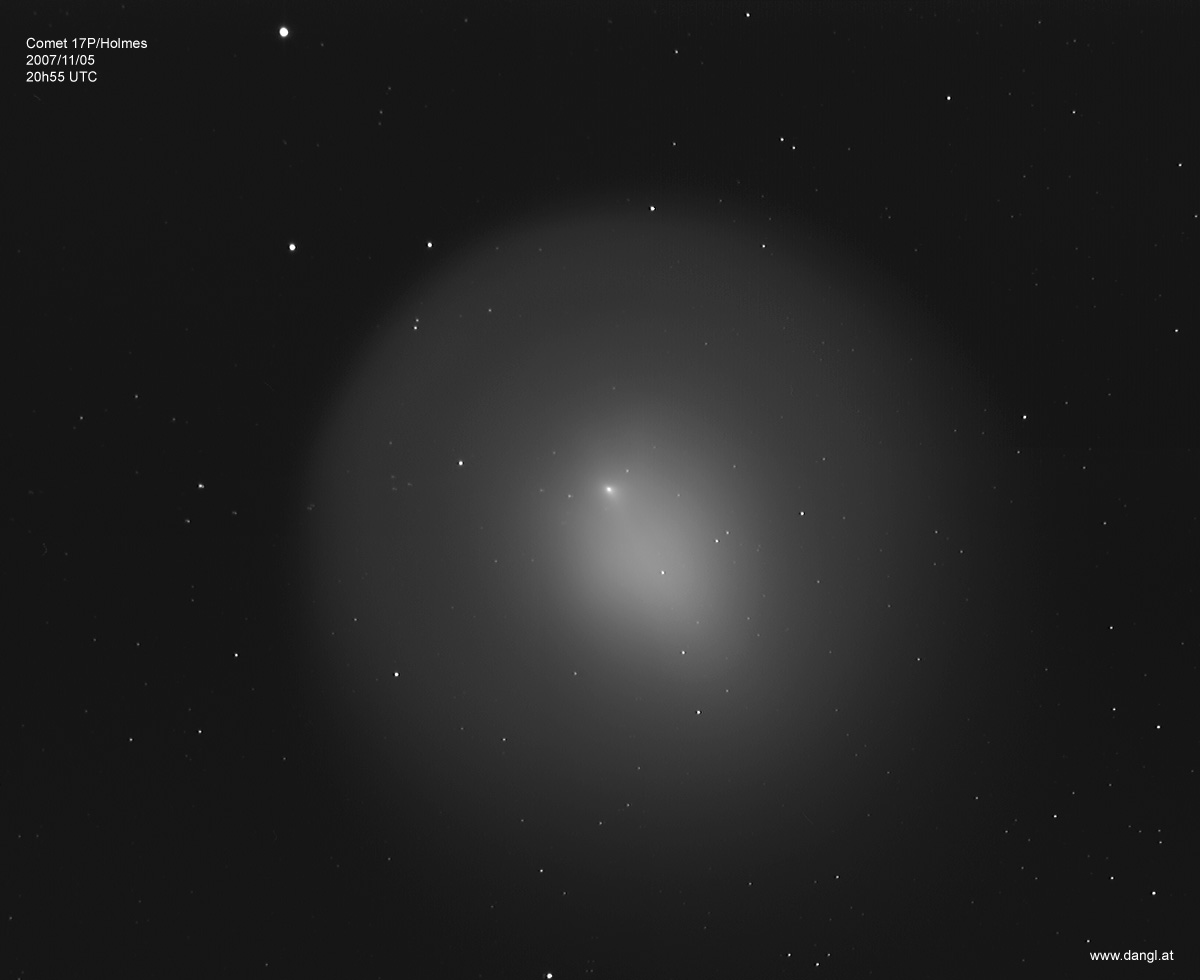 Total expansion since October 24 2007 was about 1.2 million kilometers Distance 243 million kilometers |
This image was exposured on November 17, 2007 at 00h21 UTC.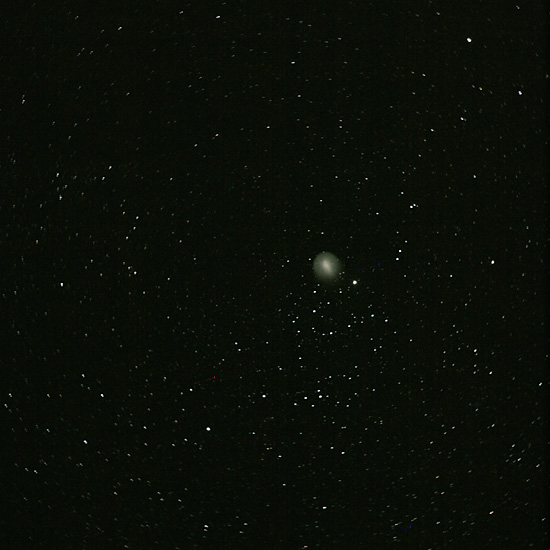 Canon Objektive 17-85mm at 85mm/f5.6, 9x8s, ISO 1600 |
| This image was exposured on November 28, 2007 from 18h49 to 19h09 UTC. The size of 17P/Holmes had reached nearly 150% of the full moon. 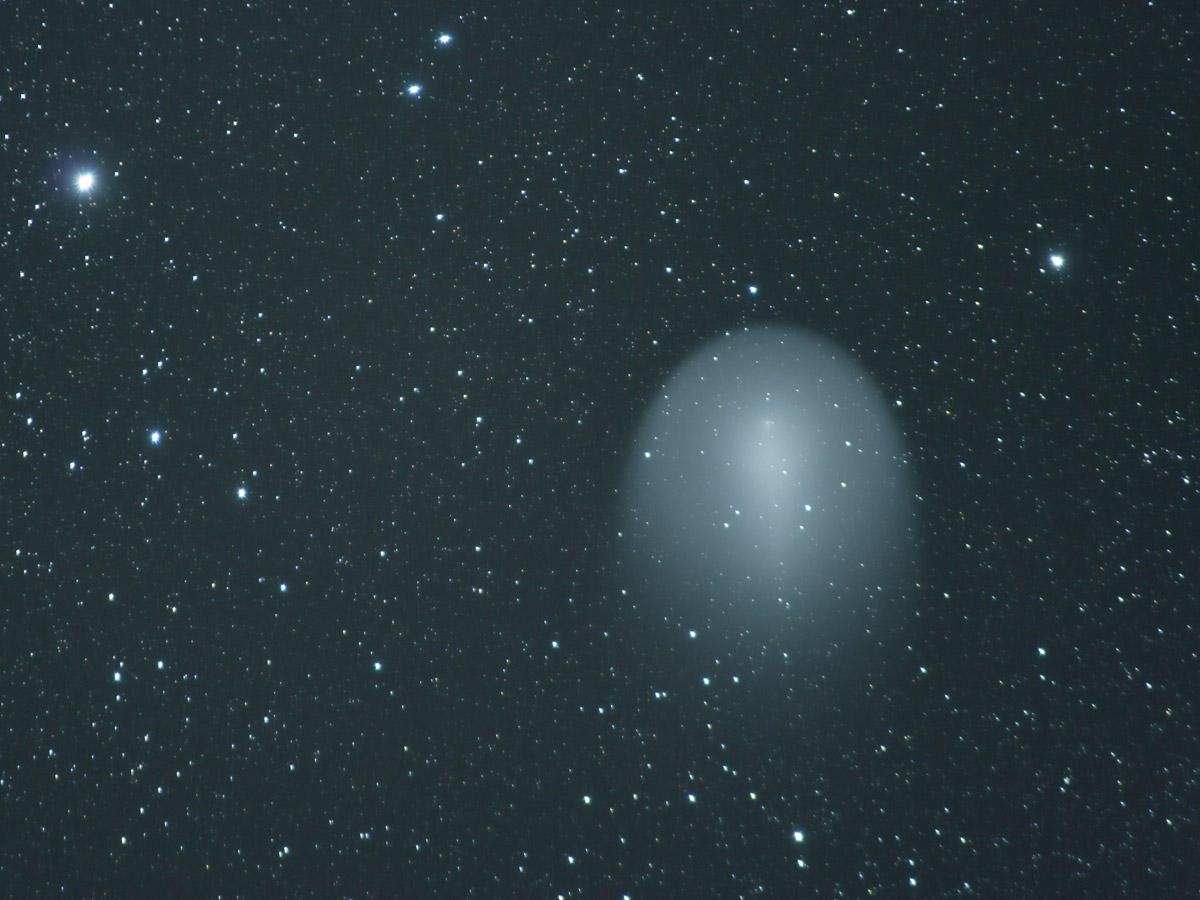 Canon telephoto lens 300mm/f5.6, 1200s, ISO 800 |
The total size on November 28, 2007 was about 3 million kilometers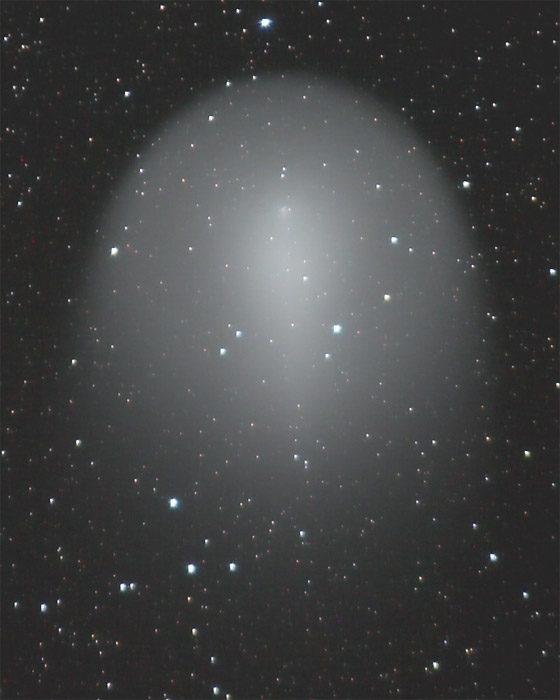 Distance 251 million kilometers. Canon telephoto lens 300mm/f5.6, 1200s, ISO 800 |
The comet 17P/Holmes on November 28, 2007 shown in direct size comparison to the moon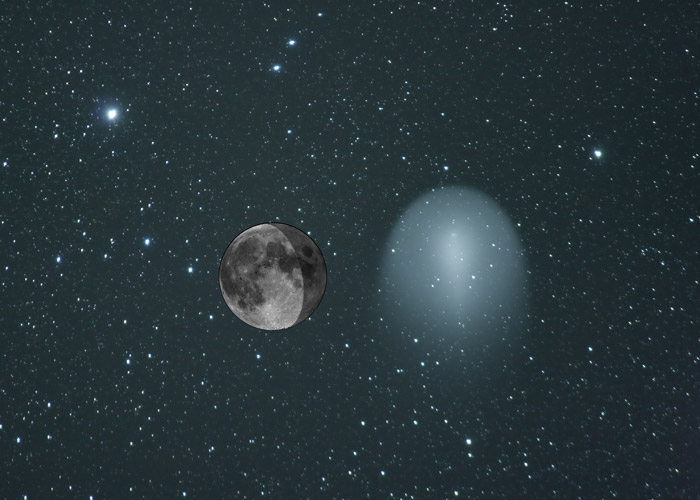 Canon telephoto lens 300mm/f5.6, 1200s, ISO 800 |
The comet 17P/Holmes on December 05, 2007 - mosaic with 4 images (without comacorrector)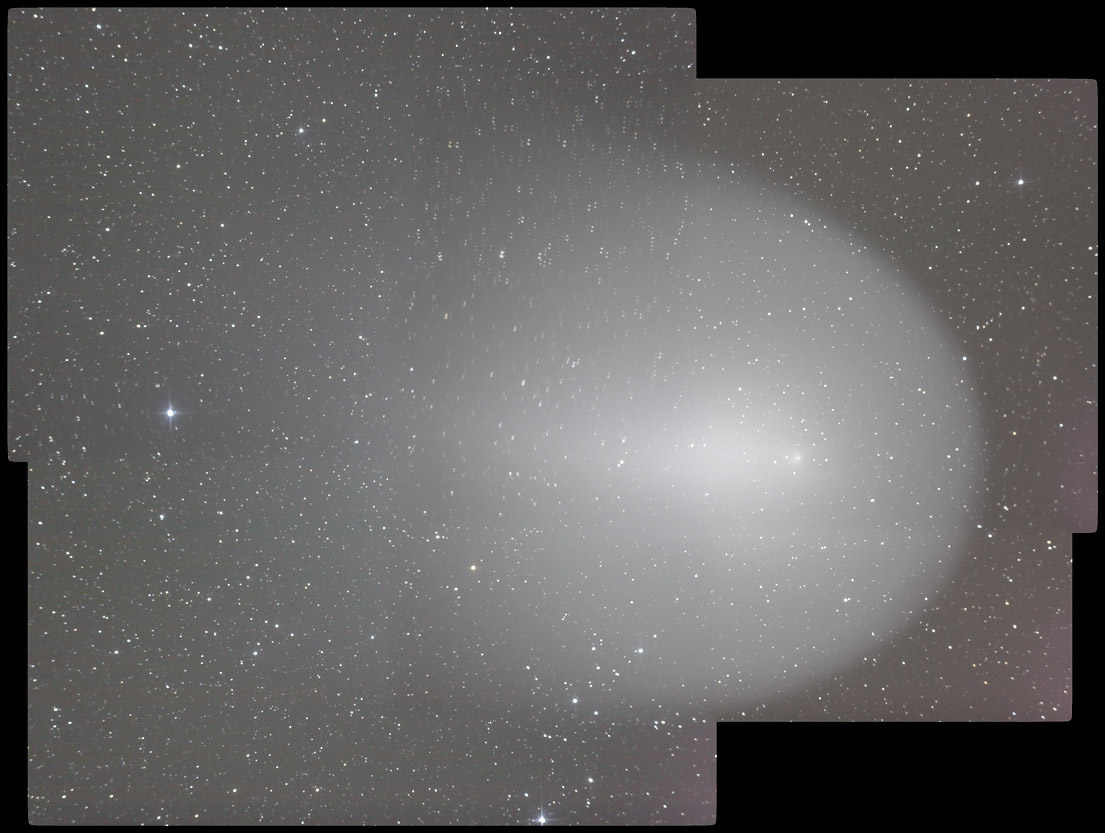 Distance 258 million kilometers. Canon 20D on Newton 254/1200mm, ISO 800, 4 x 2 x 180s = 4 x 360s |
The comet 17P/Holmes on January 08, 2008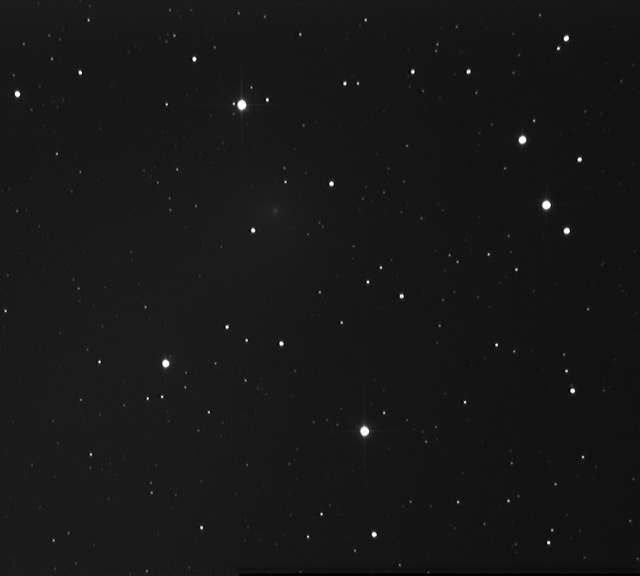 Distance 311 million kilometers. WAT-120N on Newton 254/1200mm |
The comet 17P/Holmes and Galaxy UGC2470 on January 08, 2008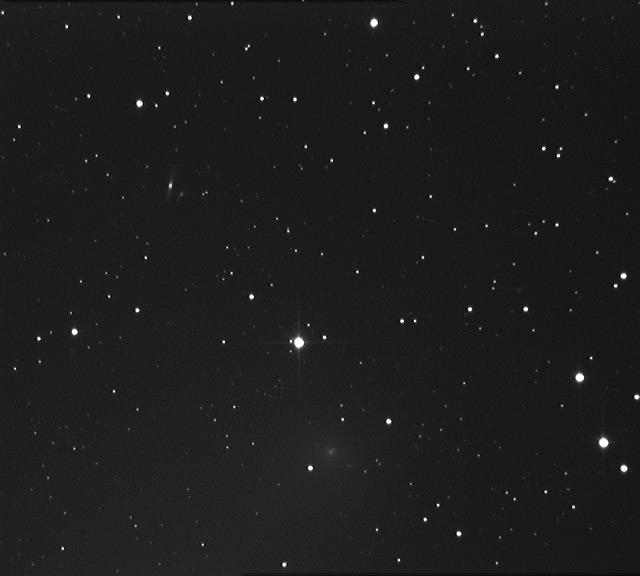 Distance 311 million kilometers. WAT-120N on Newton 254/1200mm |
The comet 17P/Holmes on January 13, 2008 Distance 321 million kilometers. WAT-120N with Lens 12.5mm f/1.2 |
May 02, 2008 |
|
Site Home |